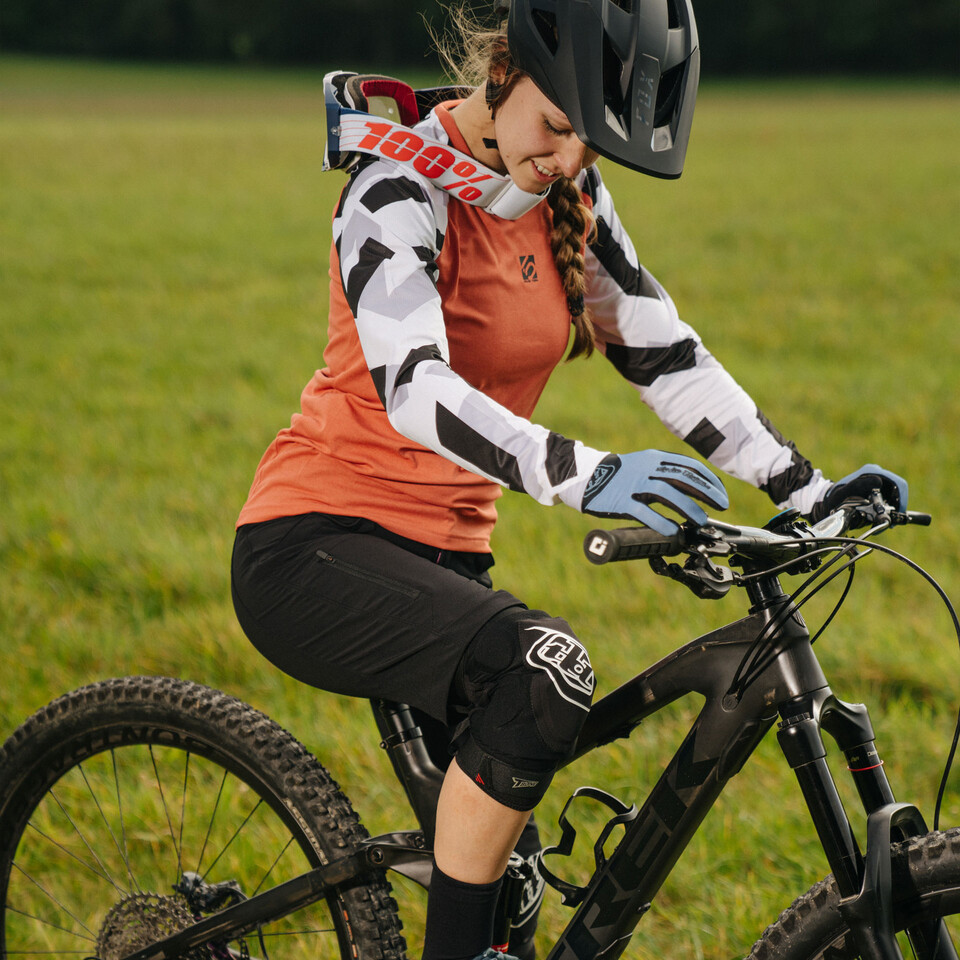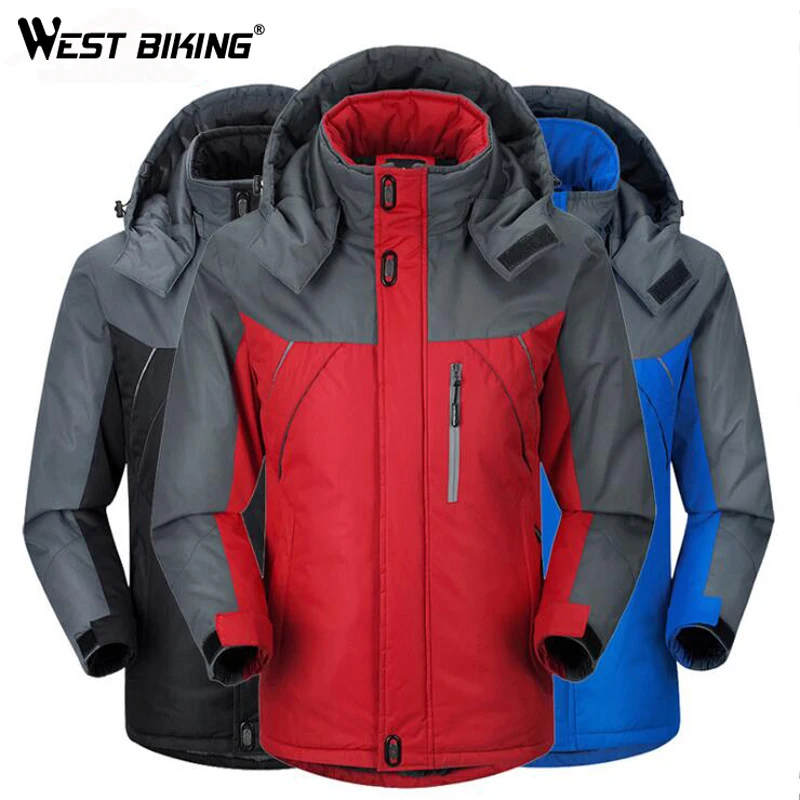Embracing Winter Biking: An Overview of the Necessities
Winter mountain biking apparel is a crucial aspect of enjoying cold-weather adventures on two wheels. Proper gear selection ensures optimal comfort, safety, and performance, allowing cyclists to make the most of their time on the trails. The importance of layering, insulation, and weather protection cannot be overstated when it comes to winter mountain biking apparel.
Layering Basics: Building a Winter Mountain Biking Wardrobe
Layering is a fundamental principle for winter mountain biking apparel, as it allows cyclists to adapt to changing temperatures and conditions. The three main layers consist of the base layer, mid layer, and outer layer. Each layer plays a distinct role in maintaining body temperature, managing moisture, and providing protection from the elements.
The base layer, worn next to the skin, should be made of breathable, moisture-wicking materials to draw perspiration away from the body. Examples include merino wool, synthetic fabrics like polyester or nylon, or blends. The base layer’s primary function is to keep cyclists dry and comfortable, reducing the risk of chills caused by damp clothing.
The mid layer provides insulation and retains body heat. Materials like fleece, down, or synthetic insulators are suitable options. Mid layers should be lightweight, breathable, and easily adjustable to accommodate varying levels of exertion and temperature. Some mid layers may include features like pit zips or adjustable cuffs for ventilation.
The outer layer, also known as the shell layer, shields cyclists from wind, rain, and snow. Waterproof and windproof materials, such as Gore-Tex, eVent, or membrane-lined fabrics, are ideal for this layer. Look for features like taped seams, adjustable hoods, and water-resistant zippers to enhance protection and functionality. The outer layer should allow for easy movement and ventilation, preventing overheating during intense rides.
Staying Warm from Head to Toe: Essential Winter Mountain Biking Apparel Items
Proper head, hand, and footwear insulation are essential components of winter mountain biking apparel. These areas are particularly susceptible to heat loss, making it crucial to invest in high-quality gear for optimal comfort and performance.
Warm and Breathable Hat
A warm and breathable hat is vital for maintaining a stable core temperature during winter rides. Look for hats made of materials like merino wool or synthetic blends that offer both insulation and moisture-wicking properties. Beanies, headbands, or skull caps are suitable options, depending on personal preference and helmet fit.
Insulating Gloves
Insulated gloves protect hands from cold temperatures and wind chill, ensuring a secure grip and control of the bike. Prioritize gloves with a waterproof membrane and insulation, such as fleece or synthetic insulators. Some gloves may include touchscreen-compatible fingertips for added convenience.
Thermal Socks
Thermal socks provide essential insulation for feet, reducing the risk of cold-related discomfort or injuries. Merino wool, silk, or synthetic blends are popular materials for thermal socks due to their warmth, moisture-wicking, and breathability. Choose socks with the right fit and cushioning to prevent blisters and ensure optimal comfort.
Face Protection: Balaclavas or Neck Gaiters
Face protection is crucial for safeguarding against wind, cold, and precipitation during winter mountain biking. Balaclavas or neck gaiters offer versatile coverage, protecting the face, neck, and ears. These accessories can be worn alone or combined with other headwear, depending on temperature and weather conditions.
Insulated Jackets: Protecting Your Core in Cold Conditions
Insulated jackets are a critical component of winter mountain biking apparel, as they provide essential warmth and protection for the core. When selecting an insulated jacket, prioritize features such as waterproofing, windproofing, and adjustable cuffs to ensure optimal comfort and performance in various winter conditions.
The Castelli Alpha Jacket is a popular choice among winter mountain bikers, offering excellent insulation and breathability. Its GORE-TEX INFINIUM™ fabric provides windproof and water-resistant properties, while the GORE-TEX membrane ensures breathability. The jacket features a full-length zipper, adjustable cuffs, and a dropped tail for added protection.
Another high-quality option is the Gore Wear C5 Gore-Tex Shakedry Jacket, which boasts a waterproof and highly breathable design. Its Shakedry™ technology sheds water instantly, keeping cyclists dry and comfortable during intense rides. The jacket’s stretchy fabric allows for a full range of motion, and its adjustable hem and cuffs ensure a customized fit.
Waterproof Trousers: Keeping Your Legs Dry and Comfortable
Waterproof trousers are an essential piece of winter mountain biking apparel, shielding cyclists from moisture, wind, and cold temperatures. By investing in high-quality waterproof trousers, riders can maintain comfort and performance during winter adventures. Focus on materials like Gore-Tex and eVent when selecting trousers for optimal protection and breathability.
The Endura MT500 Waterproof Trousers are a popular choice among winter mountain bikers, offering excellent waterproofing and breathability. These trousers feature a 3-layer waterproof fabric with a 10,000mm hydrostatic head rating, ensuring dryness in wet conditions. The adjustable waist and ankle cuffs allow for a customized fit, while zippered vents provide ventilation during intense rides.
Another top-performing option is the Showers Pass Club Pro Bib Knickers, which combine the benefits of bib shorts and waterproof trousers. These knickers feature a 3-layer waterproof and breathable Artex fabric, ensuring dryness and comfort in various winter conditions. The bib-style design provides a secure fit, while the adjustable suspenders and zippered side vents offer customization and ventilation.
How to Layer for Winter Mountain Biking: A Practical Guide
Layering is a crucial aspect of winter mountain biking apparel, allowing cyclists to adapt to changing temperatures and conditions. By following a systematic approach to layering, riders can maintain optimal comfort, safety, and performance throughout their adventures. This guide outlines the recommended products and strategies for each layer, as well as the importance of adjusting layers based on temperature and exertion level.
Base Layer
The base layer is the foundation of any winter mountain biking apparel system, providing breathability and moisture-wicking properties. Select a snug-fitting base layer made of materials like merino wool, synthetic fabrics, or silk to keep moisture away from the skin and maintain a stable body temperature.
Mid Layer
The mid layer offers insulation and warmth, trapping body heat and transporting moisture away from the base layer. Fleece, down, or synthetic insulators are suitable options for this layer. Choose a mid layer that is lightweight, breathable, and easily adjustable to accommodate varying levels of exertion and temperature.
Outer Layer
The outer layer, or shell layer, shields cyclists from wind, rain, and snow. Focus on materials like Gore-Tex, eVent, or membrane-lined fabrics when selecting an outer layer. Ensure the outer layer has features such as taped seams, adjustable hoods, and water-resistant zippers for enhanced protection and functionality.
Adjusting Layers
Properly adjusting layers is essential for maintaining comfort and performance during winter mountain biking. Monitor temperature and exertion levels, and make adjustments as needed. For example, remove layers during intense climbs to prevent overheating and add layers during descents or breaks to maintain warmth.
Additional Considerations: Accessories and Maintenance for Winter Mountain Biking Apparel
Beyond the essential apparel items for winter mountain biking, additional accessories can enhance comfort and performance in cold-weather conditions. Proper maintenance of winter gear is also crucial for longevity and optimal functionality. This section covers waterproof shoe covers, fenders, handlebar mitts, and essential maintenance tips for winter mountain biking apparel.
Waterproof Shoe Covers
Waterproof shoe covers protect feet from cold, moisture, and wind, maintaining warmth and dryness during winter rides. Look for shoe covers made of materials like neoprene, nylon, or Gore-Tex, and ensure they have adjustable closures for a secure fit. Brands like Sealskinz and Showers Pass offer high-quality shoe covers designed specifically for cycling.
Fenders
Fenders, or mudguards, prevent snow, water, and debris from splashing onto riders and their bikes, keeping both clean and dry. Full-coverage fenders are ideal for winter conditions, as they protect a larger area. Brands like SKS, Planet Bike, and Portland Design Works offer various fender models suitable for winter mountain biking.
Handlebar Mitts
Handlebar mitts, also known as pogies, provide additional insulation and wind protection for hands, allowing cyclists to use lighter gloves or even remove them during rides. These accessories attach to the handlebars and enclose the grips, creating a warm microclimate for hands. Brands like 45NRTH, Bar Mitts, and Wolf Tooth Components offer handlebar mitt options for winter mountain biking.
Maintenance Tips
Regular maintenance of winter mountain biking apparel ensures longevity and optimal performance. After each ride, wash and dry garments according to the manufacturer’s instructions. Store apparel in a cool, dry place away from direct sunlight. Periodically check for wear, tears, or damage, and repair or replace items as needed.
Staying Safe and Comfortable: Tips for Winter Mountain Biking Apparel
Proper winter mountain biking apparel is essential for maintaining safety, comfort, and performance during cold-weather adventures. By investing in high-quality gear and experimenting with different layering combinations, cyclists can enjoy their winter rides while staying warm and dry. This section offers tips for staying safe and comfortable during winter mountain biking, encouraging readers to prioritize their apparel choices for long-term enjoyment.
Prioritize Insulation and Weather Protection
Choose apparel items that offer insulation and weather protection, such as insulated jackets, waterproof trousers, and thermal socks. Opt for materials like Gore-Tex, eVent, or membrane-lined fabrics, which provide excellent waterproofing, windproofing, and breathability. Additionally, consider investing in high-quality gloves, hats, and face protection to prevent heat loss and maintain comfort.
Experiment with Layering Combinations
Layering is a crucial aspect of winter mountain biking apparel, allowing cyclists to adapt to changing temperatures and conditions. Experiment with different layering combinations to find the perfect balance between warmth, breathability, and weather protection. Remember to adjust layers based on temperature and exertion level, removing or adding layers as needed to maintain optimal comfort.
Invest in High-Quality Gear
High-quality winter mountain biking apparel may come at a higher price point, but it often offers superior performance, durability, and comfort. Invest in high-quality gear to ensure long-term enjoyment and value. Look for products from reputable brands, such as Castelli, Gore Wear, Endura, or Showers Pass, which are known for their innovative designs and commitment to quality.
Stay Visible and Connected
In winter conditions, visibility can be reduced due to shorter daylight hours, snow, or fog. Wear high-visibility apparel and incorporate reflective elements into your wardrobe to enhance safety. Additionally, consider using a bike-mounted light or headlamp to improve visibility during night rides. Staying connected is also essential during winter mountain biking. Utilize smartphone apps or GPS devices to track your route, monitor weather conditions, and share your location with others for added safety.
Regularly Inspect and Maintain Gear
Regularly inspect and maintain winter mountain biking apparel to ensure longevity and optimal performance. After each ride, wash and dry garments according to the manufacturer’s instructions. Store apparel in a cool, dry place away from direct sunlight. Periodically check for wear, tears, or damage, and repair or replace items as needed. By investing time in maintaining your gear, you can extend its lifespan and continue enjoying your winter rides for years to come.







